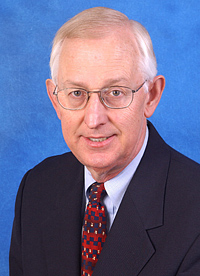FCC Formalizes Broadband Proposal
WASHINGTON—Broadcast industry reaction to the FCC's late November formal proposal to free up spectrum for use as part of a National Broadband Plan for America was largely negative, as expected, with some engineers saying some of the proposed technical goals the commission wants to accomplish seem to defy the law of physics.
On Nov. 30, the FCC unanimously approved a Notice of Proposed Rule Making (FCC 10-196) on a NBP that seeks to change TV band service rules that would permit fixed and mobile service "co-primary" users with UHF/VHF stations. One proposal would allow "channel-sharing" to permit more than one station to share the allotted 6 MHz in order to free up more spectrum for wireless broadband services.

"Channel-sharing has very little chance of being implemented on a voluntary basis, in my opinion," said Sterling Davis, vice president for technical operations at Atlanta-based Cox Media Group, owner of 15 TV stations. "Most broadcasters are probably not interested in doing that. I'm not sure there's any upside to it. It seems to preclude ever being able to transmit anything in HD—or anything in a mobile mode. So you'd have to relegate your station to just transmitting low-definition programming forever into the future," Davis said.
VHF A NON-STARTER
Most stations and broadcast groups contacted were still assessing what to make of the FCC's proposals, but the overall feeling appears to be one of wariness. "I'm not exactly sure how all of this will shake out [and] I don't think anyone else is, either," said Drew Rhodes, general manager of WLTZ-TV in Columbus, Ga. (DMA 128) owned by SagamoreHill Broadcasting. "However, it's sure exciting to play 'television' right now—especially if you're in an entrepreneurial company.
"We're not interested in participating in a voluntary auction, but we would not be opposed to other stations doing so," Rhodes added. "I can't say I'm as knowledgeable as others on 'channel-sharing,' but it seems that any loss in a station's allotted spectrum is giving away some future possibilities. We believe in the future of broadcast television in the small markets and look forward to expanding our station's offerings in the digital age."
The FCC proposals aimed at eventually re-purposing up to 120 MHz of spectrum for non-broadcast services also seek ways to boost VHF reception—potentially as a means for the FCC to expedite moving some broadcasters out of the more digital-friendly UHF band. But FCC Commissioner Michael Copps, prior to the unanimous NPRM vote, conceded in written remarks that improving VHF service would be difficult: "We looked everywhere we could during the DTV transition, and real remedies were few and far between. Let's hope the months ahead lead us to some genuine innovation," Copps said.
But Mark Aitken, director of advanced technology at Baltimore-based Sinclair Broadcast Group, thinks the VHF issue is simply a non-starter. "The FCC and everybody else knew for more than a decade that low-vee [VHF] wasn't going to work for digital broadcasting for all sorts of technical reasons. At channel 2, for example, there's upwards of a 20-db handicap in terms of receivability," Aitken said.
"For VHF, I don't think there are any solutions," said Cox Media's Davis, "and trying to solve them with technology isn't going to work. We pointed all this out at a [June 2010] meeting with the FCC. They were told there's no magical way to change physics to make that work. Everybody's abandoning [VHF] just as fast as they can because it doesn't work… Upping the power may help a bit, but it's not anywhere near what would solve the problem—which is, you can't increase [VHF] power because of interference."

Sterling Davis, vice president for technical operations, Cox Media Group In his NPRM remarks, Copps also said, "It's no secret that I have been disappointed that so much of the spectrum dividend that accrued to broadcasters as a result of the DTV transition goes dramatically under-utilized. I am not interested in pushing broadcasters somewhere else…but public interest multicasting remains, all too often, a concept—not a reality."
TOO SOON?
Yet Sinclair's Aitken, whose group represents 58 stations in 35 markets, thinks it's been too soon since the June 2009 conversion to accurately judge how local broadcasters might still diversify their spectrum. "At this point, we're just getting our engines revved up. You've got stations out there doing deals on [multicast] programming that two years ago wouldn't have been possible, and we're doing it for real money—partly because we've become the new opening to markets for… programming that largely won't be accommodated within today's satellite-cable-fiber infrastructure."
A spokesman for Hearst Television and owner of 29 TV stations, said his group "fully concurs with NAB" on the issue. NAB, for its part, said after the November vote that "[we] have no quarrel with incentive auctions that are truly voluntary… [but] NAB will oppose government-mandated signal strength degradations or limitations—and new spectrum taxes that threaten the future of free and local broadcasting." In a Dec. 6 update to its members, NAB noted the FCC "would still need authority from Congress before it could move forward with any incentive spectrum auction."
Vincent Sadusky, president/CEO of Providence, RI-based LIN Media, which owns 32 stations in 17 markets, said he's hopeful in the end the NBP proposals will afford broadcasters "increased flexibility for innovative spectrum use, while ensuring that viewers do not lose access to free terrestrial services. Broadcasters should have the flexibility to provide free programming simultaneously using multiple standards—such as ATSC, ATSC-M/H, LTE, W-Max and so on—so important news and programming can be conveyed to consumers on a wide veariety of popular devices."
Reply comments to the NPRM are due Jan. 20, 2011.
The professional video industry's #1 source for news, trends and product and tech information. Sign up below.
